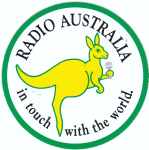|

Background
March 2012 represented
the completion by the author of 48 years of continuous involvement with writing,
hosting, and broadcasting "DX" programs over domestic and international stations.
My first involvement in writing and producing stories for the broadcastn media was in March 1964, when I started writing and taping the weekly 15 minute DX program, known as
"The World at Your Fingertips", heard over two Victorian medium-wave
stations here in Australia - 3UL in Warragul, and 3SR in Shepparton. This was under the sponsorship of the Victorian Branch
of the New Zealand DX Radio Association, of which I was a member.
Sadly, the NZDXRA closed down in 2007. In those
days, there was no Australian national radio monitoring organisation - there had been such a club, but it had ceased in 1946.
WAYF had in fact been on the air for a year or so previously, broadcast
only over 3SR Shepparton, by Bruce Eastwood. On Bruce's retirement from the field, he invited me to take over, which I did,
and I expanded its coverage by syndicating it over 3UL Warragul.
In
1965, 3SR discontinued this, and other programming, due to a major change of focus, leaving us only with 3UL, which ran the
show on Saturday mornings with a rather limited listenership.
In
1966, I moved the show to 3NE Wangaratta, for a Sunday night release, which hosted our program continuously until 1976, when
it was decided jointly that the program was no longer serving any useful purpose, either for the station or the hobby, and
it was terminated.
From 1967 until 1976, the programs
were written and remotely taped on alternate weeks by my South Australian colleague, the late Robert Chester, and myself.
My work in international radio DX programs began in 1965, when I commenced
script writing for the weekly "Australian DXers’ Calling" over
Radio Australia.
The program
first went on the air on July 9, 1946, and was written and presented by Graham Hutchins, Melbourne,
who had been involved with the management of a local DX Club. I had been a keen and avid listener to the program since around
1953 as a schoolboy, and I used to copy the details of the programs into a log-book.
That log-book is sitting in front of me as I write this, some 58 years later, and the program
of February 13, 1955 reported that Radio France Asie, in Saigon, was on the air on 15430 0800-0815 and on 9775 at 1400 to
Europe. The program also reported that RRI had installed a new 20 kW transmitter on 9550
(still there at Makassar!), and that Radio Australia would be carrying live commentary of the 5th Cricket Test between visiting
England and Australia.
Target areas were announced as including the West Indies, Africa, Korea,
Japan, and the British Isles.
As it turned out, I actually went to one day of that famous Test, at
the Melbourne Cricket Ground!
The untimely passing
of Graham in 1965 now required RA personnel to personally prepare and read the weekly scripts. I had been a regular contributor
to the program since 1963, and I was surprised when RA invited me to assume script writing responsibility in 1965. I continued
to write the scripts each week until 1982, which were read by senior RA announcers. I was not permitted to include any information
about stations in Communist-bloc countries, such as Radio Peking, Radio Moscow, Radio Tirana, etc! I was also instructed to
give as much information as possible about the Voice of Free China broadcasts. Those directions emanated from sources extremely
high up in the Australian Government. I complied!!!
In
1972, I was appointed the script manager, where I introduced and trained other Australian DX hobbyists to these duties, with
all of us sharing the roster coordination and writing tasks. The shared arrangements continued until 1976, when the program
was discontinued as part of a major and extraordinary change in RA policy.
However,
RA's Japanese department had also been using the scripts for many years, translating them into its weekly "DX Time" programs,
and we continued to prepare the scripts for the Japanese service until it itself was closed down in 1989. Estimates as to
the number of regular listeners to "DX Time" were put at many millions.
That was in the days of the 1970s following
the CB "boom", when enormous numbers of Japanese schoolchildren were attracted to shortwave listening, coining the term "BCL"
(ie, "broadcast listener"), fuelled by the burgeoning Japanese electronics' manufacturing industry.
This massive exposure of millions of Japanese children to the hobby was reflected
in the vast numbers of QSL reports received by Radio Australia's
Japanese section, the majority of which were for reception of "DX Time"! It was an enormous flood, which was beyond the capability
of RA to manage. I helped RA to process those reports, most of which were "gimme QSL" requests - there were mountains of mail
in big boxes!
RA's Indonesian service also took
the scripts for its own DX program until 1989, but there is no longer any Indonesian DX program.
Following representations from listeners, in 1982 RA decided to reintroduce a "communications"
program in the English service, calling it "Spectrum", which ran until
September 1983. This was hosted by the late Dick Speekman, formerly of Radio Netherland's "DX Juke Box" (which had also been
closed down!)
I assisted Dick
with weekly SW and DX notes, as well as being an interviewee, until that program was subsequently terminated in September
1983! One month later, it reappeared under the new name of "Talkback",
prepared by RA staffers and Dick was no longer involved.
Each
week, until June 1985, I wrote the shortwave news, and visited RA's studios in the new East Burwood
(Melbourne) complex to tape the shows. This was a new experience for me - everything had to be precisely scripted - no colloquial
expressions - no departure from the written scripts - and no jokes. I was given full access to the complex, and had to book
a studio and operator in advance.
There were also strict rules for annunciation, pronunciation, and "speaking style"
to ensure that the Australian accent didn't seem too prominent!
These studio
facilities at the time were an eye-opener, state-of-the-art, with everything on large tape spools, running at 1 7/8 inches/sec.
Everything broadcast had to be backed-up and archived for several weeks. It helps the soul to know that what you are taping
will be going out to the entire world in a few hours time!
The
East Burwood complex was closed down some years ago when ABC's operations were centralised in the Melbourne "Southbank" building. The East Burwood buildings
remain, and have been converted into residential units. The surrounding land has been re-developed and is now closely packed
with houses.
"Talkback"
came to an abrupt end in June 1985 and the popular DX news was never replaced.
I had, and continue, to be involved with DX-type program production over other international
broadcasters. This has included "Pacific DX Report" over the Sri Lanka Broadcasting Corporation (1979-1981), "South Pacific
DX Report" over HCJB (1979-1986), "DX Newsline" over Trans World Radio Guam (1982-1992), and "DX News" over Adventist World
Radio Guam (1994 onwards).
Since 1995, I have been
doing the monthly "Australian DX Report" scripts over HCJB (in the DX Partyline program) and WHRI, and since 1999 over Adventist
World Radio Asia. Since May 2006, I’ve been producing the weekly “Australian DX Report” over WWCR, Nashville, Tennessee, with 265 episodes
having been produced.
Sadly, HCJB discontinued
its DX Partyline programs in May 2011.
In
1997 I launched the EDXP Internet Radio Service, where my weekly "Australian DX Reports" (with music!) may be downloaded free
of charge by anyone, anywhere, or accessed as a Podcast!
All
of the work is done on a voluntary, spare-time basis, and I have lost count of the number of hours dedicated to the tasks
over all those years. Unlike some people, I neither seek payment, nor insist on recognition for all of this - I do it because
I enjoy it, with a desire to help others.
So, there
you are...
|

